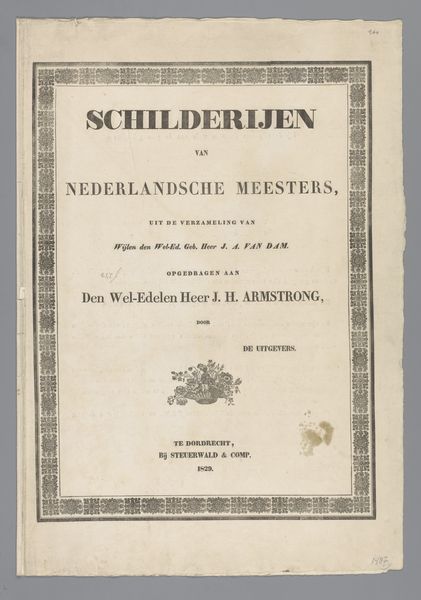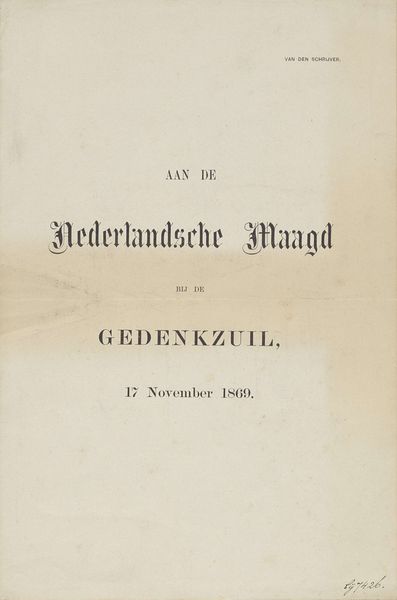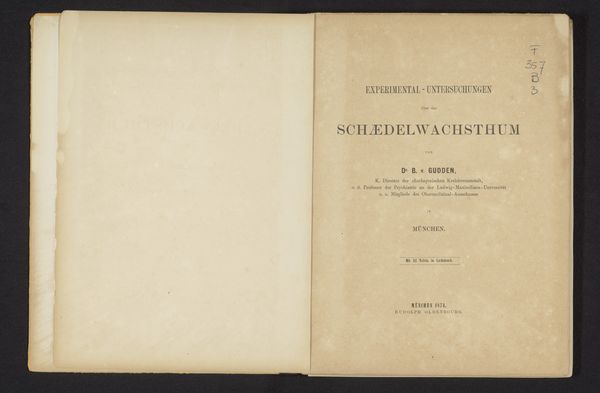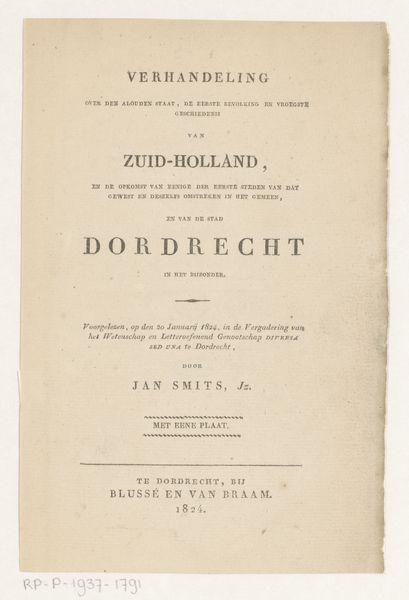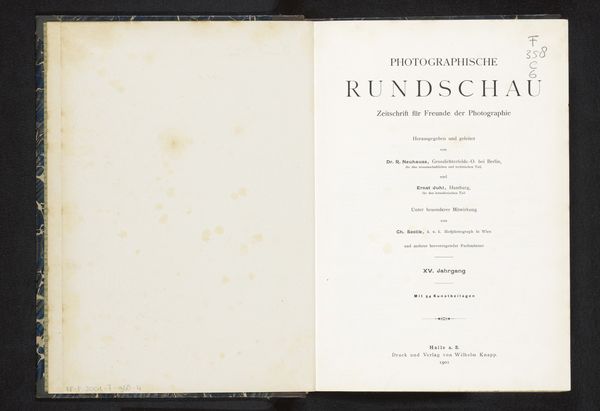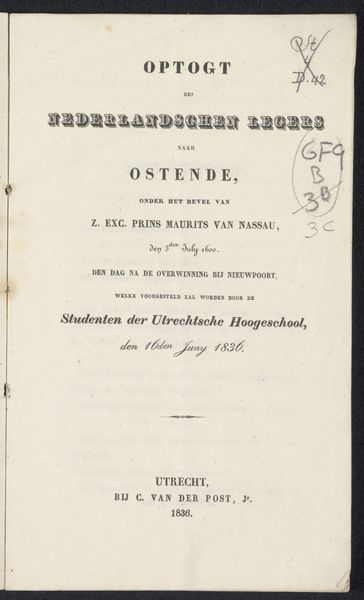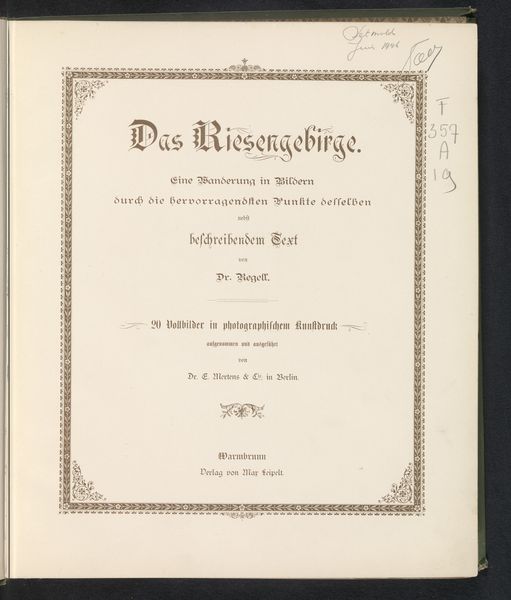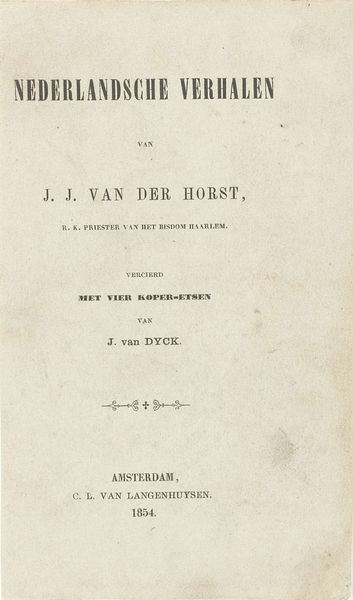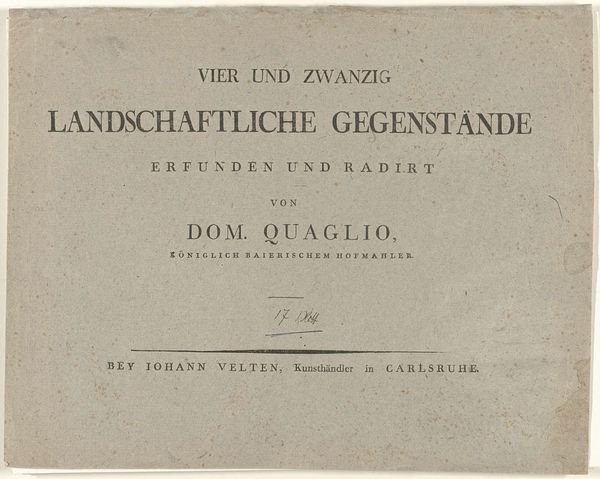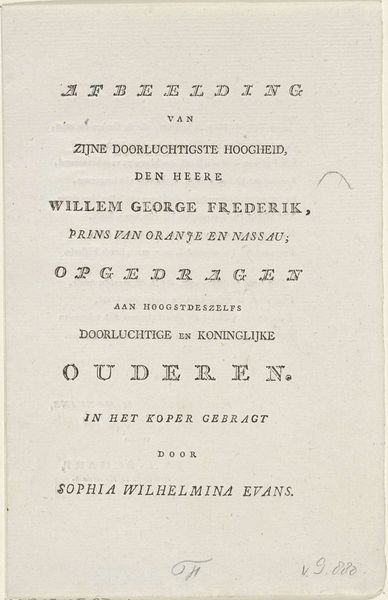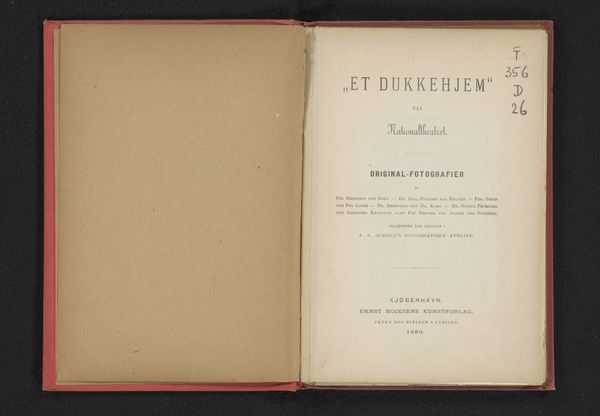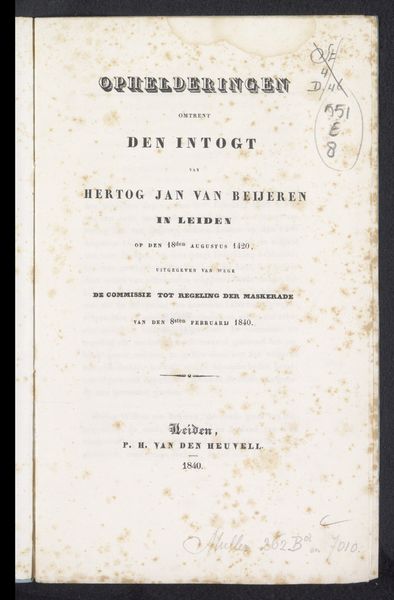
Titelpagina voor: Gillis Dyonisius Jacobus Schotel, Het Oud-Hollandsch huisgezin, Eerste Stuk, 1867 before 1867
0:00
0:00
anonymous
Rijksmuseum
print, paper, typography
#
aged paper
#
dutch-golden-age
# print
#
paper
#
typography
Dimensions: height 225 mm, width 160 mm
Copyright: Rijks Museum: Open Domain
Curator: Here we have the title page for "Het Oud-Hollandsch Huisgezin, Eerste Stuk," or "The Old-Dutch Family, First Part," which dates to before 1867. It's currently held at the Rijksmuseum. Editor: At first glance, I’m struck by the austere quality of the piece. The monochromatic palette and strict typography give it a very formal feel. It’s interesting how the arrangement creates a visual hierarchy, guiding the eye down the page. Curator: Absolutely. And it is crucial to understand the context. This wasn’t created in a vacuum; it emerged from a very particular social and economic landscape. The means of print production—the typography, the paper—all reflect the industrial advancements and publishing practices of the time. It highlights literacy rates, accessibility of printed materials, and how information was disseminated. Editor: Yes, but consider also the design elements themselves. The bold font choices suggest an intention to evoke a sense of established authority. There's also the careful placement of the publisher's name at the very bottom which creates a firm foundation for the whole arrangement. Curator: And who were the readers, the consumers, of such a publication? The title indicates a specific target audience—those interested in idealized visions of Dutch family life during the seventeenth century. What needs did it fulfill, or what ideology did it uphold about Dutch identity? Editor: True. Looking at this page purely from a visual standpoint, I notice that the paper itself has aged which contributes to an antique appearance. You can almost trace the degradation and it creates an interesting contrast with the pristine typesetting. Curator: Precisely. The wear and tear tell a story about use, handling, and the material lifespan of print. Consider how these physical characteristics intertwine with its symbolic significance, representing more than just a beautiful piece of printing. Editor: Indeed. Seeing how a work like this— seemingly just a simple title page—can offer such a rich field for interpretations has broadened my perspective. Curator: And hopefully our visitors’ too, by demonstrating how closely the material aspects of production are tied to social life.
Comments
No comments
Be the first to comment and join the conversation on the ultimate creative platform.
